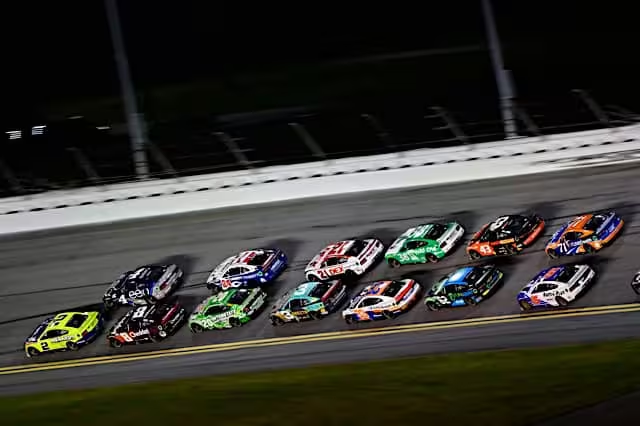Whether or not any NASCAR fan agrees with how it happened, the fact that Harrison Burton is a NASCAR Cup Series playoff driver is indisputable and that’s the cold, hard truth.
That isn’t the only thing that race fans should have came away with from last weekend’s race, though, because after re-watching and reliving some of the tapes, the fans got their money’s worth. Those in attendance and tuned in got to witness a race at Daytona International Speedway with minimal fuel saving and minimal tomfoolery (outside of Corey LaJoie nearly Lepage-ing the field).
The racing was action packed as normal at superspeedways and there was no real riding around to save fuel for a long run. Three lanes on the track were consistently being used, and the front of the field operated like a revolving door with backmarkers and long-timers all sticking their nose out front to lead a few laps.
All in all, it was a great race with a — like it or not — storybook ending, but what made the difference? Why didn’t the drivers ride around in a single file line to safe fuel like they’ve done in the Next Gen car before?
The answer, as always, is multi-faceted, but has two main pieces, so let’s dive in.
Stage Breaks
An obvious difference in the two races is the length. The Daytona 500 is, as the name suggests, a 500-mile race. The Coke Zero Sugar 400, which took place at Daytona last weekend, was just 400 miles. A shorter race cuts down on the war of attrition to simply make it to the end, but that’s not a huge difference. Arguably the biggest difference was found in the stage breaks.
For the 500, the stages were broken up into 65-65-75 in terms of laps. Last weekend, the stages were broken up 35-60-70. Thus, the first stage could be made entirely on one tank of fuel along with the second being a real stretch if a driver just wanted to ride around, and the third would require a refueling pit stop no matter what.
Therefore, saving fuel was no where close to beneficial during stage one, two was pushing it and three was out of the question. The staggering of the stage breaks was a simple but effective way to ensure the health of the competition, but at the same time, the competition itself got more fierce.
Win & You’re In
The playoff race is a nasty business. It’s vicious around the cut line, and with no top-30 rule in place, all it takes is one race win to knock a driver out of the running who’s trying to point their way…
Click Here to Read the Full Original Article at …

